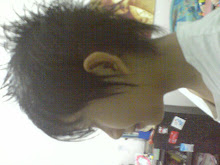Traditional Culture : Wayang Kulit

Wayang kulit, shadow puppets prevalent in Java and Bali in Indonesia, are without a doubt the best known of the Indonesian wayang. Kulit means skin, and refers to the leather construction of the puppets that are carefully chiseled with very fine tools and supported with carefully shaped buffalo horn handles and control rods.
The stories are usually drawn from the Ramayana, the Mahabharata or the Serat Menak.
There is a family of characters in Javanese wayang called Punakawan; they are sometimes referred to as "clown-servants" because they normally are associated with the story's hero, and provide humorous and philosophical interludes. Semar is the father of Gareng (oldest son), Petruk, and Bagong (youngest son). These characters did not originate in the Hindu epics, but were added later, possibly to introduce mystical aspects of Islam into the Hindu-Javanese stories. They provide something akin to a political cabaret, dealing with gossip and contemporary affair.
Historically, the performance consisted of shadows cast on a cotton screen and an oil lamp. Today, the source of light used in wayang performance in Java is most often a halogen electric light. Some modern forms of wayang such as Wayang Sandosa created in the Art Academy at Surakarta (STSI) has employed spotlights, colored lights and other innovations.
The handwork involved in making a wayang kulit figure that is suitable for a performance takes several weeks, with the artists working together in groups. They start from master models (typically on paper) which are traced out onto kulit (skin or parchment), providing the figures with an outline and with indications of any holes that will need to be cut (such as for the mouth or eyes). The figures are then smoothed, usually with a glass bottle, and primed. The structure is inspected and eventually the details are worked through. A further smoothing follows before individual painting, which is undertaken by yet another craftsman. Finally, the movable parts (upper arms, lower arms with hands and the associated sticks for manipulation) mounted on the body, which has a central staff by which it is held. A crew makes up to ten figures at a time, typically completing that number over the course of a week.
The painting of less expensive puppets is handled expediently with a spray technique, using templates, and with a different person handling each color. Less expensive puppets, often sold to children during performances, are sometimes made on cardboard instead of leather.




